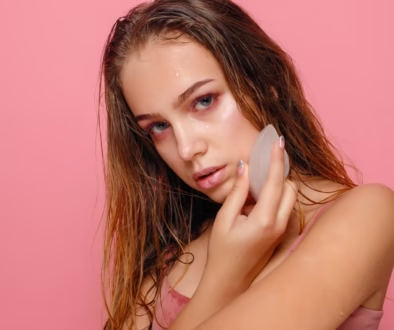Face Mapping Guide: What Your Acne means
Acne Face Mapping: What Your Breakouts Really Mean for Your Health
Acne breakouts differ depending on the location of the breakouts on the face. Although pesky pimples are irritating, what your acne signifies is often much more profound than what is seen on the skin. Acne has been connected to an imbalance in the body’s internal systems.
The face maps to certain areas, corresponding to certain organs or health issues. This is, therefore what face mapping tries to map out-to link acne with its internal health.
Understanding face mapping can reveal causes of one’s breakouts, furthering treatments and healthier-looking skin.
What is Acne Face Mapping?
Acne face mapping is a technique tracing the cause of breakouts to imbalances in different organs or body systems.
It’s based on the ancient practices of Ayurvedic and Chinese medicine; skin conditions were considered reflections of internal health. Before modern-day medical tests, face mapping was one of the primary means of understanding the state of health in different body parts.
The principle behind face mapping is simple: breakouts in specific areas of the face are believed to be linked to underlying health problems.
This mapping can reveal information about digestive issues, hormonal imbalances, poor circulation, and more. For example, pimples on the forehead could indicate digestive problems, while chin breakouts may suggest hormonal fluctuations.
Although this technique is a very good tool in understanding acne, everyone is unique. The same spot breakout can have different reasons, and this can be linked to health, diet, and lifestyle.
Face mapping allows you to find the source of your acne so you can better decide what treatments you may need, which skincare products will be helpful for you, and even the lifestyle changes you might make.
How to Read the Acne Face Map
Understanding the acne face map requires knowing what each area of your face represents. Here’s how to interpret different breakout zones:
-
Eyebrow Area
What it Means: Acne above and within the eyebrows suggests an imbalance in the liver or gallbladder, often caused by a poor diet.
–How to Treat It: Cut out junk food and overly processed items. It’s possible to improve liver functioning by adding more whole foods like fruits and vegetables in your diet.
-
Forehead and Hairline
What it Means: Breakouts here could be related to digestive problems or even irritable bowel syndrome.
How to Treat It: To improve digestion, drink more water and limit sugary and carbonated drinks. Use oil-free and non-comedogenic hair products to avoid clogging pores along the hairline. Washing your face and hairline thoroughly after using haircare products is essential.
-
Nose
What It Indicates: Acne that develops on the nose reflects upon the health of the heart and lungs. Breakouts or blackheads on the nose might also indicate high pressure in cases related to lower levels of vitamin B in one’s body.
How to Treat It: Include heart-healthy foods like leafy greens and healthy fats (like nuts and avocados) in your diet. If vitamin B is a concern for deficiency, include a vitamin B supplement as well.
-
Cheeks
What it Means: Breakouts on the cheeks are often related to different health issues based on which side of the face they appear.
Acne on the left cheek is said to be associated with the liver or a bacterial buildup, while acne on the right cheek is linked to lung health or sugar intolerance.
How to Treat It: In the case of left cheek breakouts, eat cooling foods like cucumber and watermelon in order to detoxify the liver.
For the right cheek, avoid refined sugar and learn deep breathing to heal the lungs. Good care of skin, such as daily cleansing and using salicylic acid products, can treat these breakouts around the mouth.
-
Around the Mouth
What it Means: Pimples around the mouth often reflect an unhealthy diet and issues with the intestines and liver.
How to Treat It: Make simple dietary changes by cutting out fried foods and processed sugars. Instead, focus on fiber-rich foods like vegetables and fruits to support liver and digestive health.
-
Chin and Jawline
What it Means: Acne on the chin and jawline is commonly associated with hormonal imbalances, especially those triggered by stress. These breakouts often occur in adults and may be linked to the menstrual cycle.
How to Treat It: Balance your hormones by adding omega-3-rich foods to your diet like salmon and walnuts. With more severe hormonal acne, drugs like spironolactone that regulate testosterone can prevent acne related to it.
Understanding through face mapping what your acne is trying to tell you about your overall health, in general, is something highly useful.
Acne might result from anything: stress, diet, or genetics. However, utilizing face mapping to identify some kind of pattern will help determine which may be the root cause for those breakouts. Here is a quick recap of the takeaways:
Eyebrow Area: This corresponds to liver or gallbladder imbalances, probably from poor diet.
Forehead and Hairline: Seen to be associated with digestive issues or irritable bowel syndrome.
Nose: Suggests problems in heart and lung health or low vitamin B levels
Cheeks: Left cheek acne is connected to liver health and bacterial buildup, while right cheek acne suggests lung issues and sugar intolerance.
Around the Mouth: Reflects poor dietary habits and poor health of liver or intestines.
Chin and Jawline: Most commonly associated with hormonal imbalances, particularly those induced by stress or menstruation.
Face mapping can give insight into the causes of acne but, on the other hand, is not an exact science.
Genetics, diet, and lifestyle all play a crucial role in the development of acne. It’s always advisable to take a holistic approach when dealing with acne triggers that are addressed both by lifestyle change and topical treatments.
As you understand the connection of acne with internal health, then you will be in a better position to make decisions as far as your skincare routine is concerned, diet, and also overall health.



